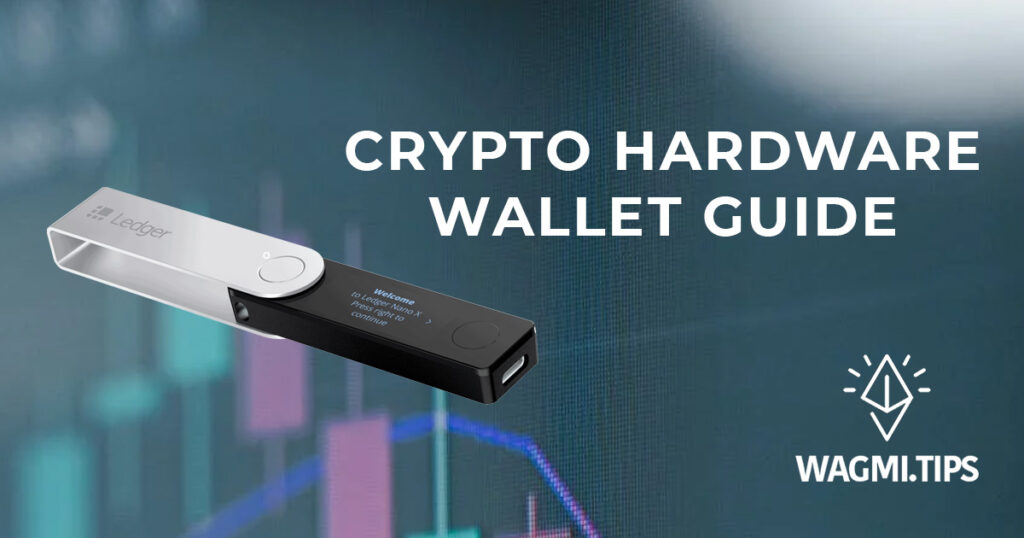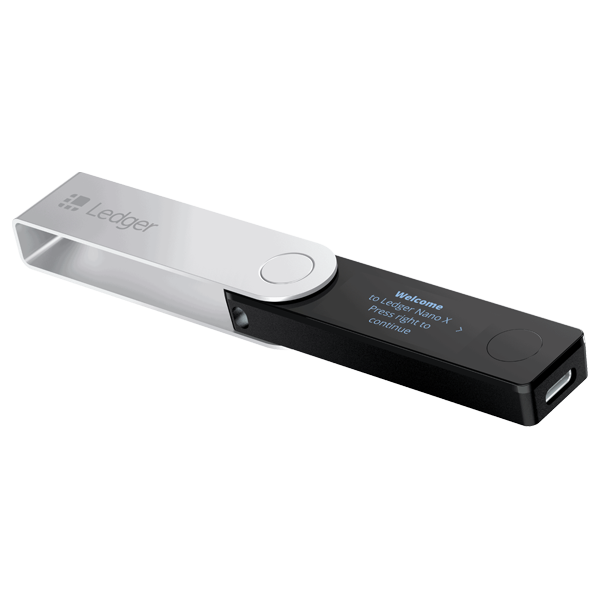Crypto Hardware Wallet Guide – How To Use A Hardware Wallet
The word “wallet” evokes a mental image of a container where you can store physical money. As cryptocurrencies don’t have a physical form, a special wallet is needed to safely and securely store your digital assets.
If you dabble in cryptocurrencies, you might get away with using a software wallet to store your private keys. Still, a crypto hardware wallet is something you need to consider if you’re serious about keeping your cryptocurrencies safe and secure from hackers.

Table of Contents
What is a hardware wallet?
A hardware wallet often called a cold wallet, is a portable physical device where you can store your cryptocurrencies’ private keys. A Hardware wallet keeps the private keys to your cryptocurrencies offline and secures you from digital threats like hacks.
Hardware wallets are a secure method of storing your digital assets. When you use a hardware wallet, access to your cryptocurrencies is encrypted by the device; this makes it safer than other options like an online wallet.
An online wallet stores your access online. There is the possibility of losing your coins if the website is hacked. This risk is non-existent for hardware Wallets, as they use offline storage.
Additionally, an extra pin protects your hardware wallet from unauthorized use. Also, if you misplace your wallet or it gets stolen, your coins will be inaccessible without the pin.
A hardware wallet lets you physically sign off on transactions, ensuring an additional security layer on your every action.
How does a hardware wallet work?
Although they are called wallets, cryptocurrencies are never actually stored within a hardware wallet; they always live on the blockchain.
Hardware wallets store your private keys and are protected by a pin and an optional passphrase, making it near impossible for keys to be extracted by thieves if your wallet happens to be stolen.
Your private keys open the lock to the address on the blockchain, where your cryptocurrencies live. You only need your hardware wallet to interact with your digital assets since the blockchain exists everywhere.
If your wallet gets misplaced, a single seed phrase backs up your assets. A seed phrase or a recovery phrase is a list of words that regenerate your private keys. You can also use a seed phrase to move your private keys to a different hardware wallet.
There are two distinct ways in which a hardware wallet works.
First of all, they protect your private keys.
Often considered cold storage, hardware wallets isolate your private keys from the internet, thereby mitigating the risks of your cryptocurrencies being compromised from an online attack.
Secondly, they allow you to sign and verify transactions on the blockchain.
When you initiate a blockchain transaction, you ‘sign’ a special message. You prove ownership of your private key through your ‘signature.’ Without your private key, forging this signature is next to impossible so that no one can make transactions on your behalf without your key.
Popular hardware wallets
A Hardware wallet is considered the gold standard for safe and secure crypto storage. Hardware wallets make an excellent choice for anyone looking to safely store a substantial crypto portfolio or store their assets long-term.
However, there are several dozen options on the market, each with its target userbase and pros and cons.
Here are some popular hardware wallets options.
Ledger
Ledger wallets are hardware wallets made by Ledger, headquartered in France. Ledger was launched in 2014 by eight professionals with backgrounds in cryptocurrencies, embedded security, and entrepreneurship.
Ledger’s goal is to create safe, secure solutions for blockchain applications.
Ledger wallets are device-based, which means that they use USB drives to store private keys, making it difficult for hackers to access them online.
There are currently two types of ledger hardware wallets: the Ledger Nano S and Nano X.
Trezor
The idea for Trezor started in 2011 after a bitcoin conference in Prague. In 2014, SatoshiLabs created the original Trezor One hardware wallet, which became the first hardware wallet in the world.
In 2018, a significantly upgraded model was released, the Trezor Model T. The Trezor Model T design is similar to the Model One version. However, it supports a wider range of currencies and a larger touchscreen interface.
How much is a hardware wallet?
Price is one of the factors before buying a hardware wallet. No one would want to splash $200 or more on just a wallet.
For example, the Trezor one hardware wallet costs about $119, while the model t version costs $320. In contrast, the Ledger Nano S costs $59, while the nano x costs $150.
Security tips for hardware wallets
The first security tip for hardware wallets is to buy from a reputable brand like the ones listed above. If either of them is not for you, you should be prepared to do your homework when considering other alternatives.
Here are some hardware security tips you should follow to safeguard your crypto assets.
- Avoid Discounts: Be wary of buying wallets from discount sellers. Also, try to avoid buying a hardware wallet on sites like Craiglist or other discount outlets.
- Only Dealers: only buy hardware wallets from authorized dealers or the original manufacturers.
- Monitor the Startup: when starting your hardware wallet for the first time, ensure you monitor the display for error messages. An error message could be an indication of tampered software. You should inform the manufacturer if the wallet has been tampered with and throw it away.
- Used wallets: you should never use/buy a wallet that has already been used
- A pre-seeded wallet: A new hardware wallet will never have a pre-printed seed on the package. If you find a printed seed on your new wallet, you have been scammed.
- Seed: your seed would be generated the first time you use your wallet. This seed is needed if you ever want to switch to a new wallet or recover your keys. Make sure to keep your seed in a secure location.
Following the outlined steps is a great way to secure your hardware wallet.
What is a hot wallet?
A hot wallet runs on an internet-connected device like a mobile device, tablet, or computer.
Hot wallets are considered less secure because it generates your private keys on an internet-connected device. A hot wallet is a good option if you make frequent crypto payments, but it is not as good as a secure storage means for your assets. An example of a popular hot wallet is MetaMask. Check out our full MetaMask security guide here.
Difference between hardware wallets and hot wallets
The major difference between hardware wallets and hot wallets is that hardware wallets are not connected to the internet, while hot wallets are.
Another key difference between hardware and hot wallets is the price. A hot wallet is typically free, while a hardware wallet can cost you anywhere between $50-$200.
Additionally, a hardware wallet is less convenient than a hot wallet because you have to power it on and connect it to the internet.
Where To Buy A Crypto Hardware Wallet Online?

You can buy the latest Ledger Hardware Cryptocurrency Wallet online on the Ledger website. Click the button below to start shopping.
Final thoughts
Nothing beats a hardware wallet when looking to safely store your cryptocurrency assets and keep them safe from online hacks. Hardware wallets also ensure you have full control of your crypto assets and provide you with the peace and security needed to invest your crypto assets efficiently.
